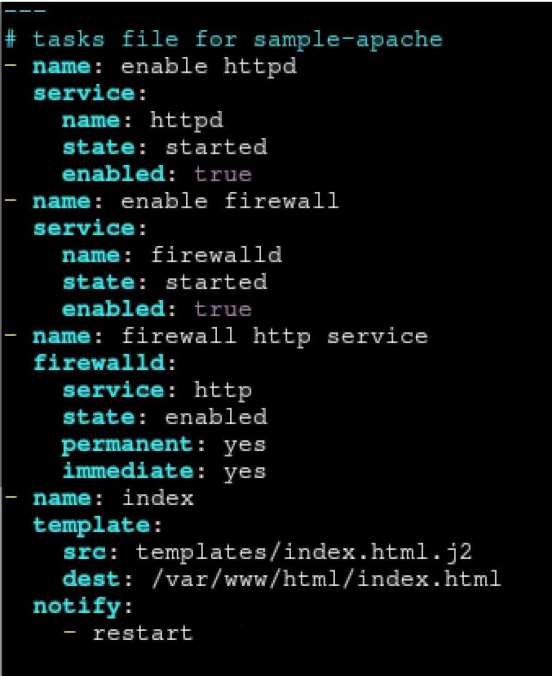Quiz
User bob has been created on your control node. Give him the appropriate permissions on the
control node. Install the necessary packages to run ansible on the control node.
Create a configuration file /home/bob/ansible/ansible.cfg to meet the following requirements:
• The roles path should include /home/bob/ansible/roles, as well as any other path that may be
required for the course of the sample exam.
• The inventory file path is /home/bob/ansible/inventory.
• Ansible should be able to manage 10 hosts at a single time.
• Ansible should connect to all managed nodes using the bob user.
Create an inventory file for the following five nodes:
nodel.example.com
node2.example.com
node3.example.com
node4.example.com
node5.example.com
Configure these nodes to be in an inventory file where node1 is a member of group dev. nodc2 is a
member of group test, nodc3 is a member of group proxy, nodc4 and node 5 are members of group
prod. Also, prod is a member of group webservers.
Explanation for
complete Solution
below.
In/home/sandy/ansible/ansible.cfg
[defaults]
inventory=/home/sandy/ansible/inventory
roles_path=/home/sandy/ansible/roles
remote_user= sandy
host_key_checking=false
[privilegeescalation]
become=true
become_user=root
become_method=sudo
become_ask_pass=false
In /home/sandy/ansible/inventory
[dev]
node 1 .example.com
[test]
node2.example.com
[proxy]
node3 .example.com
[prod]
node4.example.com
node5 .example.com
[webservers:children]
prod
TESTLET-3.
LAB SETUP
You will need to set up your lab by creating 5 managed nodes and one control node.
So 6 machines total. Download the free RHEL8 iso from Red Hat Developers website.
***Control node you need to set up***
You need to create some static ips on your managed nodes then on the control node set them up in
the /etc/hosts file as follows:
vim /etc/hosts
10.0.2.21 node1.example.com
10.0.2.22 node2.example.com
10.0.2.23 node3.example.com
10.0.2.24 node4.example.com
10.0.2.25 node5.example.com
yum -y install ansible
useradd ansible
echo password | passwd --stdin ansible
echo "ansible ALL=(ALL) NOPASSWD:ALL" > /etc/sudoers.d/ansible
su - ansible; ssh-keygen
ssh-copy-id node1.example.com
ssh-copy-id node2.example.com
ssh-copy-id node3.example.com
ssh-copy-id node4.example.com
ssh-copy-id node5.example.com
***Each manage node setup***
First, add an extra 2GB virtual harddisk to each control node 1,2,3. Then add an extra hard disk to
control node 4. Do not add an extra hard disk to node 5. When you start up these machines the extra
disks should be automatically located at /dev/sdb (or /dev/vdb depending on your hypervisor).
useradd ansible
echo password | passwd --stdin ansible
echo "ansible ALL=(ALL) NOPASSWD:ALL" > /etc/sudoers.d/ansible
Note python3 should be installed by default, however if it is not then on both the control node and
managed nodes you can install it also set the default python3 if you are having trouble with python2
being the default.
yum -y install python3
alternatives --set python /usr/bin/python3
All machines need the repos available. You did this in RHSC
A. To set up locally you just need to do the same for each machine. Attach the rhel8 iso as a disk to
virtualbox, kvm or whatever hypervisor you are using (this will be /dev/sr0). Then inside the
machine:
mount /dev/sr0 to /mnt
Then you will have all the files from the iso in /mnt.
mkdir /repo
cp -r /mnt /repo
vim /etc/yum.repos.d/base.repo
Inside this file:
[baseos]
name=baseos
baseurl=file:///repo/BaseOS
gpgcheck=0
Also the appstream
vim /etc/yum.repos.d/appstream.repo
Inside this file:
[appstream]
name=appstream
baseurl=file:///repo/AppStream
gpgcheck=0
Quiz
new repository. The name of the repo will be 'EPEL' the description 'RHEL8' the baseurl is
'https://dl.fedoraproject.org/pub/epel/epel-release-latest-8.noarch.rmp' there is no gpgcheck, but
you should enable the repo.
* You should be able to use an bash script using adhoc commands to enable repos. Depending on
your lab setup, you may need to make this repo "state=absent" after you pass this task.
Explanation for
complete Solution
below.
baseurl=https://dl.fedoraproject.org/pub/epel/epel-release-latest-8.noarch.rmp
gpgcheck=no enabled=yes'
chmod 0777 adhoc.sh
vim adhoc.sh
#I/bin/bash
ansible all -m yum_repository -a 'name=EPEL description=RHEL8
TESTLET-3.
LAB SETUP
You will need to set up your lab by creating 5 managed nodes and one control node.
So 6 machines total. Download the free RHEL8 iso from Red Hat Developers website.
***Control node you need to set up***
You need to create some static ips on your managed nodes then on the control node set them up in
the /etc/hosts file as follows:
vim /etc/hosts
10.0.2.21 node1.example.com
10.0.2.22 node2.example.com
10.0.2.23 node3.example.com
10.0.2.24 node4.example.com
10.0.2.25 node5.example.com
yum -y install ansible
useradd ansible
echo password | passwd --stdin ansible
echo "ansible ALL=(ALL) NOPASSWD:ALL" > /etc/sudoers.d/ansible
su - ansible; ssh-keygen
ssh-copy-id node1.example.com
ssh-copy-id node2.example.com
ssh-copy-id node3.example.com
ssh-copy-id node4.example.com
ssh-copy-id node5.example.com
***Each manage node setup***
First, add an extra 2GB virtual harddisk to each control node 1,2,3. Then add an extra hard disk to
control node 4. Do not add an extra hard disk to node 5. When you start up these machines the extra
disks should be automatically located at /dev/sdb (or /dev/vdb depending on your hypervisor).
useradd ansible
echo password | passwd --stdin ansible
echo "ansible ALL=(ALL) NOPASSWD:ALL" > /etc/sudoers.d/ansible
Note python3 should be installed by default, however if it is not then on both the control node and
managed nodes you can install it also set the default python3 if you are having trouble with python2
being the default.
yum -y install python3
alternatives --set python /usr/bin/python3
All machines need the repos available. You did this in RHSC
A. To set up locally you just need to do the same for each machine. Attach the rhel8 iso as a disk to
virtualbox, kvm or whatever hypervisor you are using (this will be /dev/sr0). Then inside the
machine:
mount /dev/sr0 to /mnt
Then you will have all the files from the iso in /mnt.
mkdir /repo
cp -r /mnt /repo
vim /etc/yum.repos.d/base.repo
Inside this file:
[baseos]
name=baseos
baseurl=file:///repo/BaseOS
gpgcheck=0
Also the appstream
vim /etc/yum.repos.d/appstream.repo
Inside this file:
[appstream]
name=appstream
baseurl=file:///repo/AppStream
gpgcheck=0
Quiz
hosts. On dev, prod and webservers install packages httpd, mod_ssl, and mariadb. On dev only install
the development tools package. Also, on dev host update all the packages to the latest.
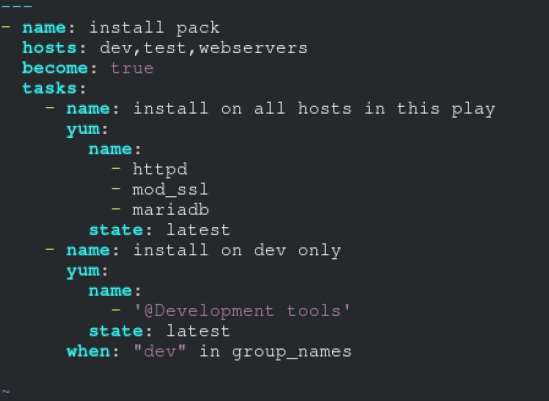
Quiz
enables and starts the firewall and allows the webserver service. Create a template called
index.html.j2 which creates and serves a message from /var/www/html/index.html Whenever the
content of the file changes, restart the webserver service.
Welcome to [FQDN] on [IP]
Replace the FQDN with the fully qualified domain name and IP with the ip address of the node using
ansible facts. Lastly, create a playbook in /home/sandy/ansible/ called apache.yml and use the role
to serve the index file on webserver hosts.
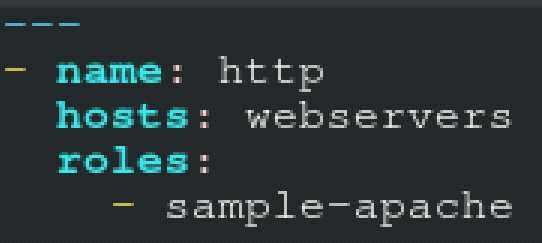
Quiz
for the first role is geerlingguy.haproxy and geerlingguy.php. Name the first haproxy-role and the
second php-role. The roles should be installed in /home/sandy/ansible/roles.

Quiz
/home/sandy/ansible/. The haproxy-role should be used on the proxy host. And when you curl
http://node3.example.com it should display "Welcome to node4.example.com" and when you curl
again "Welcome to node5.example.com" The php-role should be used on the prod host.
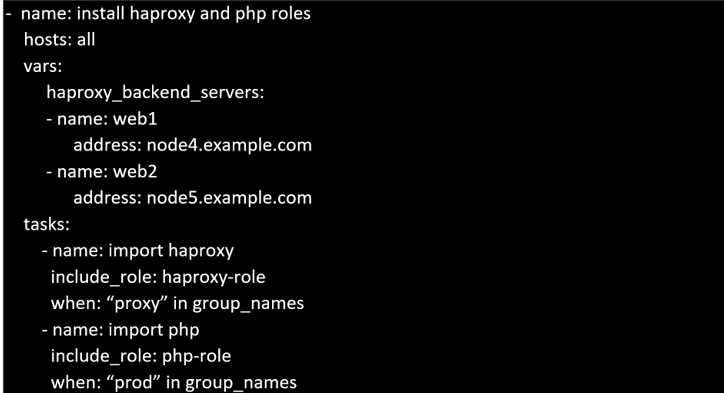
Quiz
/home/sandy/ansible directory. In the lock.yml file define two variables. One is pw_dev and the
password is 'dev' and the other is pw_mgr and the password is 'mgr' Create a regular file called
secret.txt which contains the password for lock.yml.

Quiz
at /home/sandy/ansible. The passwords for these users should be set using the lock.yml file from
TASK7. When running the playbook, the lock.yml file should be unlocked with secret.txt file from
TASK 7.
All users with the job of 'developer' should be created on the dev hosts, add them to the group
devops, their password should be set using the pw_dev variable. Likewise create users with the job
of 'manager' on the proxy host and add the users to the group 'managers', their password should be
set using the pw_mgr variable.
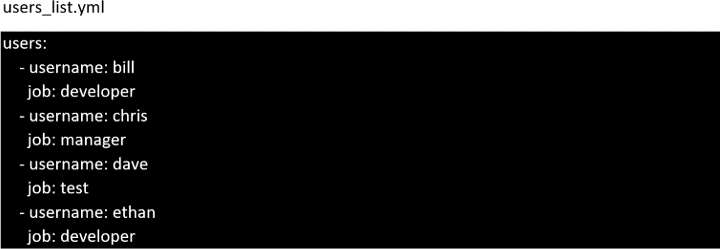

Quiz
HOST=
MEMORY=
BIOS=
VDA_DISK_SIZE=
VDB_DISK_SIZE=
Create the playbook /home/bob/ansible/specs.yml which copies specs.empty to all remote nodes'
path /root/specs.txt. Using the specs.yml playbook then edit specs.txt on the remote machines to
reflect the appropriate ansible facts.
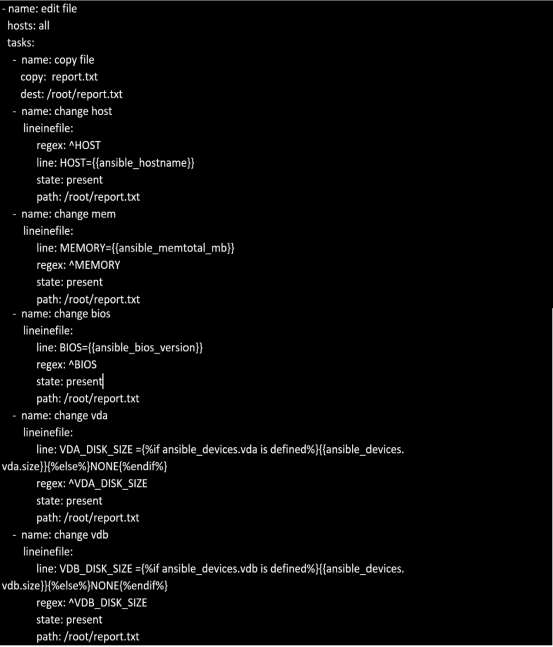
Quiz
one below. The order of the nodes doesn't matter. Then create a playbook in /home/sandy/ansible
called hosts.yml and install the template on dev node at /root/myhosts
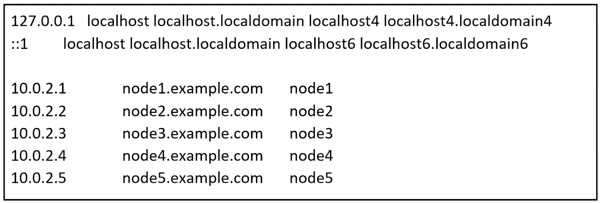
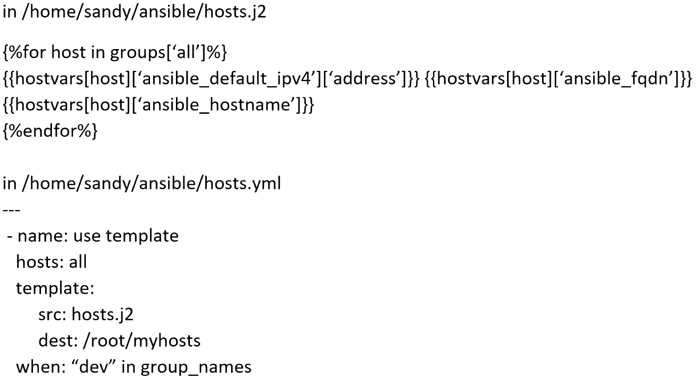
Red Hat Certified Engineer (RHCE) exam for Red Hat Enterprise Linux 8 Practice test unlocks all online simulator questions
Thank you for choosing the free version of the Red Hat Certified Engineer (RHCE) exam for Red Hat Enterprise Linux 8 practice test! Further deepen your knowledge on RedHat Simulator; by unlocking the full version of our Red Hat Certified Engineer (RHCE) exam for Red Hat Enterprise Linux 8 Simulator you will be able to take tests with over 32 constantly updated questions and easily pass your exam. 98% of people pass the exam in the first attempt after preparing with our 32 questions.
BUY NOWWhat to expect from our Red Hat Certified Engineer (RHCE) exam for Red Hat Enterprise Linux 8 practice tests and how to prepare for any exam?
The Red Hat Certified Engineer (RHCE) exam for Red Hat Enterprise Linux 8 Simulator Practice Tests are part of the RedHat Database and are the best way to prepare for any Red Hat Certified Engineer (RHCE) exam for Red Hat Enterprise Linux 8 exam. The Red Hat Certified Engineer (RHCE) exam for Red Hat Enterprise Linux 8 practice tests consist of 32 questions and are written by experts to help you and prepare you to pass the exam on the first attempt. The Red Hat Certified Engineer (RHCE) exam for Red Hat Enterprise Linux 8 database includes questions from previous and other exams, which means you will be able to practice simulating past and future questions. Preparation with Red Hat Certified Engineer (RHCE) exam for Red Hat Enterprise Linux 8 Simulator will also give you an idea of the time it will take to complete each section of the Red Hat Certified Engineer (RHCE) exam for Red Hat Enterprise Linux 8 practice test . It is important to note that the Red Hat Certified Engineer (RHCE) exam for Red Hat Enterprise Linux 8 Simulator does not replace the classic Red Hat Certified Engineer (RHCE) exam for Red Hat Enterprise Linux 8 study guides; however, the Simulator provides valuable insights into what to expect and how much work needs to be done to prepare for the Red Hat Certified Engineer (RHCE) exam for Red Hat Enterprise Linux 8 exam.
BUY NOWRed Hat Certified Engineer (RHCE) exam for Red Hat Enterprise Linux 8 Practice test therefore represents an excellent tool to prepare for the actual exam together with our RedHat practice test . Our Red Hat Certified Engineer (RHCE) exam for Red Hat Enterprise Linux 8 Simulator will help you assess your level of preparation and understand your strengths and weaknesses. Below you can read all the quizzes you will find in our Red Hat Certified Engineer (RHCE) exam for Red Hat Enterprise Linux 8 Simulator and how our unique Red Hat Certified Engineer (RHCE) exam for Red Hat Enterprise Linux 8 Database made up of real questions:
Info quiz:
- Quiz name:Red Hat Certified Engineer (RHCE) exam for Red Hat Enterprise Linux 8
- Total number of questions:32
- Number of questions for the test:50
- Pass score:80%
You can prepare for the Red Hat Certified Engineer (RHCE) exam for Red Hat Enterprise Linux 8 exams with our mobile app. It is very easy to use and even works offline in case of network failure, with all the functions you need to study and practice with our Red Hat Certified Engineer (RHCE) exam for Red Hat Enterprise Linux 8 Simulator.
Use our Mobile App, available for both Android and iOS devices, with our Red Hat Certified Engineer (RHCE) exam for Red Hat Enterprise Linux 8 Simulator . You can use it anywhere and always remember that our mobile app is free and available on all stores.
Our Mobile App contains all Red Hat Certified Engineer (RHCE) exam for Red Hat Enterprise Linux 8 practice tests which consist of 32 questions and also provide study material to pass the final Red Hat Certified Engineer (RHCE) exam for Red Hat Enterprise Linux 8 exam with guaranteed success. Our Red Hat Certified Engineer (RHCE) exam for Red Hat Enterprise Linux 8 database contain hundreds of questions and RedHat Tests related to Red Hat Certified Engineer (RHCE) exam for Red Hat Enterprise Linux 8 Exam. This way you can practice anywhere you want, even offline without the internet.
BUY NOW